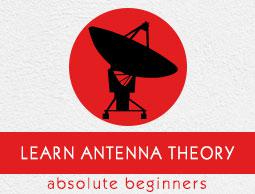Antenna Theory - Beam and Polarization
This chapter deals with the parameters of radiated beam of the antenna. These parameters help us to know about the beam specifications.
Beam Area
According to the standard definition, “Beam area is the solid angle through which all the power radiated by the antenna would stream if P (θ, Ø) maintained its maximum value over ΩA and was zero elsewhere.”
The radiated beam of the antenna comes out from an angle at the antenna, known as solid angle, where the power radiation intensity is maximum. This solid beam angle is termed as the beam area. It is represented by ΩA.
The radiation intensity P (θ, Ø) should be maintained constant and maximum throughout the solid beam angle ΩA, its value being zero elsewhere.
$$Power\ radiated = P(\theta,\Phi)\Omega_{A} \:watts$$
Beam angle is a set of angles between the half power points of the main lobe.
Mathematical Expression
The mathematical expression for beam area is
$$\Omega_{A} =\int_{0}^{2\pi}\int_{0}^{\pi}P_{\pi}(\theta,\Phi)d\Omega\ wattts$$
$$d\Omega = \sin\theta\ d\theta\ d\Phi\ watts$$
Where
- $\Omega_{A}$ is the solid beam angle.
- $\theta$ is the function of angular position.
- $\Phi$ is the function of radial distance.
Units
The unit of beam area is watts.
Beam Efficiency
According to the standard definition, “The beam efficiency states the ratio of the beam area of the main beam to the total beam area radiated.”
The energy when radiated from an antenna, is projected according to the antenna’s directivity. The direction in which an antenna radiates more power has maximum efficiency, while some of the energy is lost in side lobes. The maximum energy radiated by the beam, with minimum losses can be termed as beam efficiency.
Mathematical Expression
The mathematical expression for beam efficiency is −
$$\eta_{B} = \frac{\Omega_{MB}}{\Omega_{A}}$$
Where,
- $\eta_{B}$ is the beam efficiency.
- $\Omega_{MB}$ is beam area of the main beam.
- $\Omega_{A}$ is total solid beam angle (beam area).
Antenna Polarization
An Antenna can be polarized depending upon our requirement. It can be linearly polarized or circularly polarized. The type of antenna polarization decides the pattern of the beam and polarization at the reception or transmission.
Linear polarization
When a wave is transmitted or received, it may be done in different directions. The linear polarizationof the antenna helps in maintaining the wave in a particular direction, avoiding all the other directions. Though this linear polarization is used, the electric field vector stays in the same plane. Hence, we use this linear polarization to improve the directivity of the antenna.
Circular polarization
When a wave is circularly polarized, the electric field vector appears to be rotated with all its components loosing orientation. The mode of rotation may also be different at times. However, by using circular polarization, the effect of multi-path gets reduced and hence it is used in satellite communications such as GPS.
Horizontal polarization
Horizontal polarization makes the wave weak, as the reflections from the earth surface affect it. They are usually weak at low frequencies below 1GHz. Horizontal polarization is used in the transmission of TV signals to achieve a better signal to noise ratio.
Vertical polarization
The low frequency vertically polarized waves are advantageous for ground wave transmission. These are not affected by the surface reflections like the horizontally polarized ones. Hence, the vertical polarization is used for mobile communications.
Each type of polarization has its own advantages and disadvantages. A RF system designer is free to select the type of polarization, according to the system requirements.


